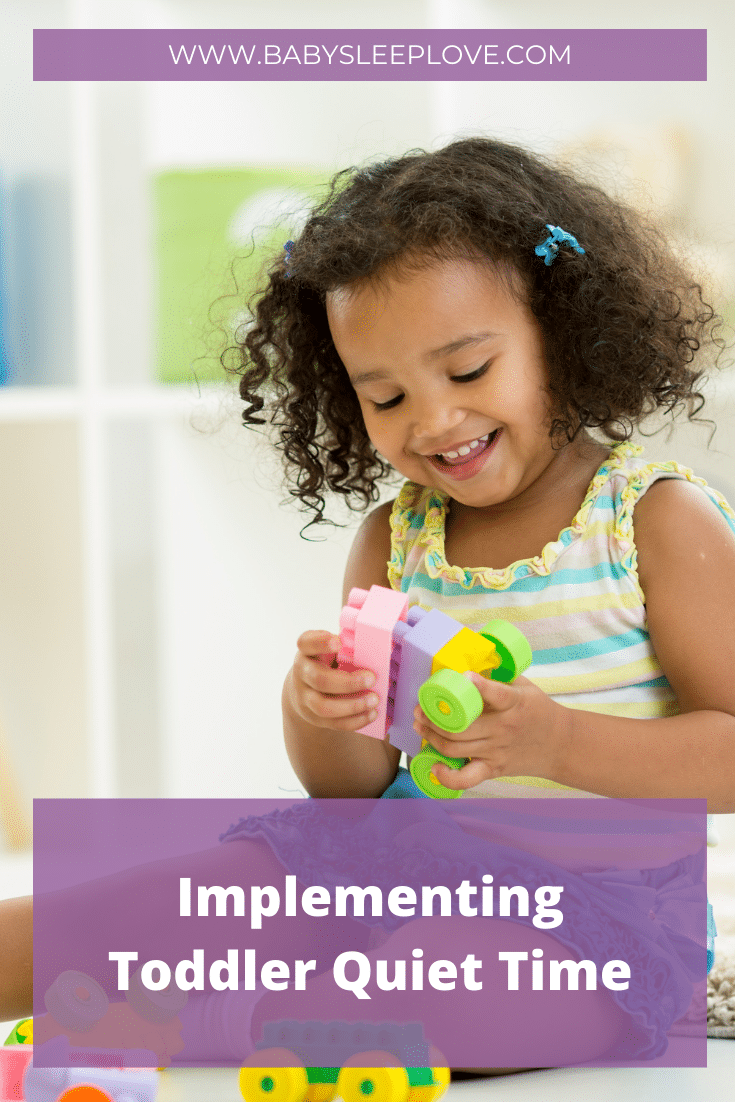
Baby Sleep Love
Certified Sleep Consultant
I’ve worked with many parents and caregivers who are unhappily surprised when their toddler begins resisting nap time and wonder what they can do to preserve that all-important mid-day break. Let me introduce toddler quiet time. Rest time during the day is incredibly important for both children and their adults. However, rest time can often feel difficult to achieve.

There are typically two ways that your toddler demonstrates their readiness for dropping their nap. First, they will stop falling asleep for their nap. They may roll around, sing, talk to themselves – but, they will not sleep. Or, they may become upset by their inability to fall asleep. Second, their bedtime will become undesirably late. For most parents, undesirable bedtimes are later than about 8:30 p.m. When this happens at around 2-3 years old, it’s a clear signal that your toddler’s nap is interfering with their nighttime sleep.
Nighttime sleep is more restorative and important for the whole family. Therefore, if a toddler’s nap is interfering with nighttime sleep, I recommend you to consider limiting or eliminating your toddler’s nap altogether using toddler quiet time.
Once your toddler’s nap is dropped – either because they stop sleeping, or you’ve stopped them from sleeping – you will want to transition directly into a mid-day rest break.
Read more about implementing toddler rest times here.
Happy sleeping, parents!

SaveSave
SaveSave
Join Baby Sleep Love on Facebook and Instagram.
Craving some step-by-step, personalized help with teaching your toddler to fall asleep on their own, and sleep through the night? I’ve got you covered! Take a look at how we can help with our packages here. I work with children up to 6 years old (it’s never too late!).